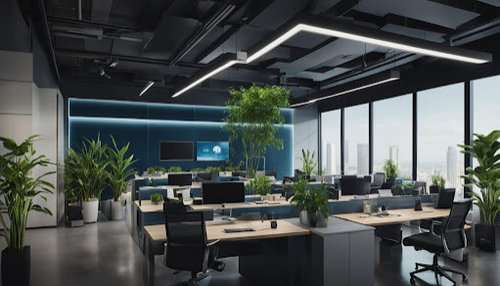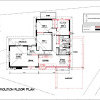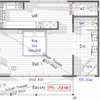The Importance of Interior Design in Workplace Productivity

Interior design plays a crucial role in enhancing workplace productivity. With the right design, employees feel more comfortable and motivated, resulting in increased efficiency and job satisfaction. That is why it's essential to hire professional interior designers who offer full service interior design and to create a perfect working environment.
The Value of a Well-Planned Layout
Strategic space planning is a cornerstone of effective interior design. The goal is to make the best possible use of available square footage to support various work modes. For instance, open-concept seating fosters collaboration, huddle rooms enable focused small-group work, and private offices allow for concentration without disruptions.Getting the layout right ensures smooth traffic flow while reducing noise and other distractions. This allows employees to navigate the office and locate colleagues easily. Adequate meeting and breakout areas are also key, so teams can gather without commandeering desks.Thoughtful touches like conveniently located supplies, muted acoustics, and access to natural light all contribute to an environment tailored for productivity. Full-service interior design firms account for these kinds of factors when envisioning and actualizing office designs.
The Psychology of Color Choices
Color palettes carry psychological implications that can dramatically influence workplace satisfaction on a subconscious level. Warm hues like red, orange, and yellow spark creativity, energy, optimism, and collaboration. Cool tones of blue, green, and violet evoke calmness, focus, and analytical thinking.
Neutrals like black, white, and gray project an aura of sleek professionalism. Strategic use of color zoning helps strike the right balance for different functional spaces, branding goals, and corporate culture. Vibrant accent walls or furniture inject visual interest while reflective ceiling tiles and indirect lighting prevent sensory overload.Full-service interior designers understand how to wield color, lighting, and materials to sculpt aesthetically pleasing and emotionally uplifting workspaces. Employees are more engaged and satisfied when surrounded by environments that make them feel energized, relaxed, or inspired.
Ergonomics and Overall Well Being
Physical and mental well-being are intrinsically linked to productivity. Ergonomic furniture and equipment help reduce muscle fatigue, eye strain, repetitive motion injuries, and other problems associated with prolonged computer use. Height-adjustable desks allow switching between sitting and standing. Mirrored screens reduce glare while air purifiers maintain indoor air quality.Interior landscaping introduces natural elements like large leafy plants, moss walls, or water features. Exposure to living greenery has measurable benefits for concentration, stress reduction, and overall happiness. Such wellness-oriented design considerations demonstrate that companies care about employee health, comfort and quality of life while working.
Fostering Community Through Design
Communal areas for informal social gatherings also boost morale and engagement. Stylish cafeterias, lounge spaces, game rooms, and outdoor seating provide opportunities to strengthen interpersonal bonds. These humanizing touches remind team members that they are part of a cohesive organization and community.
Tasteful Artwork and Branded Accents
Interior design also represents a chance to reinforce brand identity through visual content. Showcasing products, imagery, and signage reflecting core values and aesthetics brings purpose and inspiration into the workspace. Local art displays and photography introduce originality while speaking to regional talent and community.Branded wall graphics, murals or dimensional lettering infuse company personality using texture, shape, typography, and color. Playful, creative flourishes humanize sterile corporate environments. When sensitively incorporated, bespoke design elements make employees proud to work in a one-of-a-kind office tailored to company culture.
Hiring Specialized Professionals
Given the scope of considerations involved, it is prudent to hire experienced full-service interior design consultants for office renovations or builds. They holistically analyze needs and preferences to translate concepts into spatially harmonious and branded environments. With expertise spanning architecture, ergonomics, acoustics, furnishing, color psychology, lighting, and project management, their input is invaluable.Some interior design firms even handle furnishings procurement and installation. The most talented designers meld aesthetic vision, technical skills, and client collaboration into signature, made-to-order spaces. Although their services are an investment, the benefits are multifold.

Conclusion
To sum up, interior design plays a crucial role in enhancing workplace productivity. It is essential to designers to create an ideal working environment. Strategic space planning, appropriate color schemes, and furniture arrangement are some of the elements that can significantly impact employee efficiency.Moreover, interior design is not just limited to workplace productivity. It is equally important to consider interior design in home renovations and room makeovers. A well-designed home interior can increase productivity and create an inspiring environment. Therefore, it is recommended to seek the assistance of professional interior designers for home renovation projects and room makeovers.




Related Discussions
Designing one room at a time.
Q
Urgently need help with our tiny-bathroom design
Q
POLL: What home design trend are you happy to see the back of?
Q
An outdoor room offers more
Q